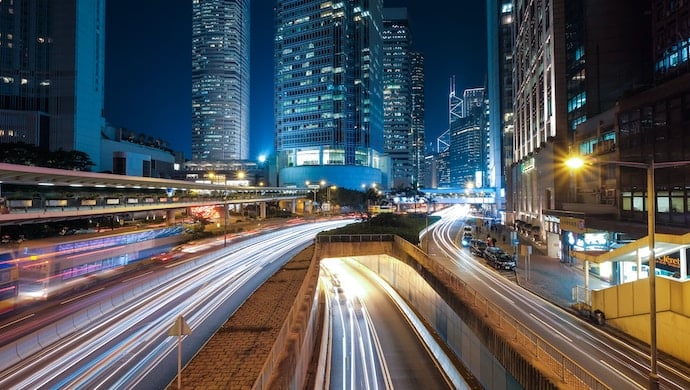Not only will this bring more comfort and convenience into modern life, but it will bring new ways of being energy efficient and lower the costs of the city
We’re used to weird and wonderful things coming out of science and technology at breakneck speeds. But never before has technology been so advanced, and this time the future promises an almost movie-like reality. The focus of this article is one of these promises, the smart city.
The idea of a completely connected city has been born from the recent technological phenomenon known as the internet-of-things. Simply put, this is the process of endowing inanimate objects with sensors and connecting them via the internet, allowing them to gather, analyse and send data automatically. This has already begun to enter the home life with smart houses that can perform various tasks for you, such as running a bath to be ready when you get in from work.
Moving into the city will be a huge step forward for mankind. Not only will this bring more comfort and convenience into modern life, but it will bring new ways of being energy efficient and lower the costs of the city. To give you an idea as to the aesthetic and technological possibilities, this article will focus on three features of the future city: electricity, street lights, skyscrapers and automation.
Efficient use of resources
One of the benefits of smart initiatives is an improvement in efficiency. This could be in the form of logistics, workflows, and utilisation of resources. For instance, in New York City, which is considered to be a leader in smart city initiatives, IoT and blockchain startup MXC has partnered with mapping Citiesense to deploy smart sensors and collect data about walking routes, sewage flows, car usage, and other common activities across the city’s five boroughs. MXC is a blockchain startup that deploys smart sensors and LPWAN gateways across dense geographies to aid in data collection, analytics, and interpretation. With data on a large scale from different sources, cities can improve how resources are allocated and consumed.
Streetlights
Already, there are many areas where councils and authorities have opted to switch off or dim certain street lights between the hours of midnight and early morning, saving huge amounts of energy that would be otherwise wasted. Although there were concerns that this darkness might result in higher traffic accidents and crime, research has shown that this is not the case. The future city offers the best of both worlds. The streetlights of tomorrow will have sensors that can detect movement and will light up as and when they’re needed, saving massive amounts of energy and money.
Also read: Taipei is using a blockchain alternative to transform into a smart city
Buildings and Skyscrapers
The costs of running a huge skyscraper filled with businesses can be very daunting. If you consider the amount of electricity needed to keep the building working through the day — and even night — and then the fact that more and more people are migrating to urban areas, into high-rise accommodations, there needs to be some solution as to how we can keep these buildings powered for as little cost as possible. The utopian notion, and one that is key in the smart city index, is energy self-sufficiency. Skyscrapers of the future might very well have the answer. Windows have been developed that double as solar panels, for instance. These windows will cover the facades of these future buildings, meaning that they will be able to essentially power themselves without the need to deploy separate photovoltaic devices.
Automation
This relates more to transport than automation within the home or workplace, even though automation is set to take over up to 40% of jobs as we know them. Specifically, this involves the use of drones for deliveries and self-driving cars for taxis. In the not too distant future there could be a second lane of traffic overhead containing drones delivering goods, plus self-piloting helicopter taxis, similar to the ones being introduced in Dubai. Given that drones can work constantly if properly maintained, this will cut delivery times and costs as drivers would not be needed. Likewise, Singapore is currently utilising IoT and sensors to reduce road congestion, as well as other data-centric means of improving city services.
—-
e27 publishes relevant guest contributions from the community. Share your honest opinions and expert knowledge by submitting your content here.
Photo by Puk Patrick on Unsplash
The post IoT, AI and data contribute to smart city initiatives, and here are practical things we can expect from major cities appeared first on e27.
